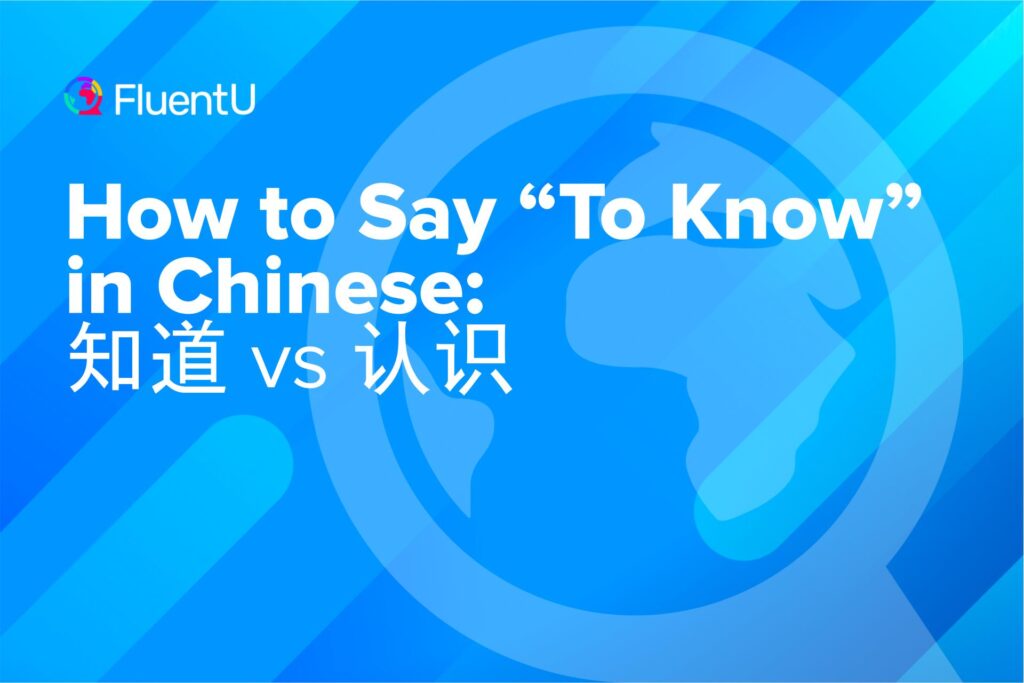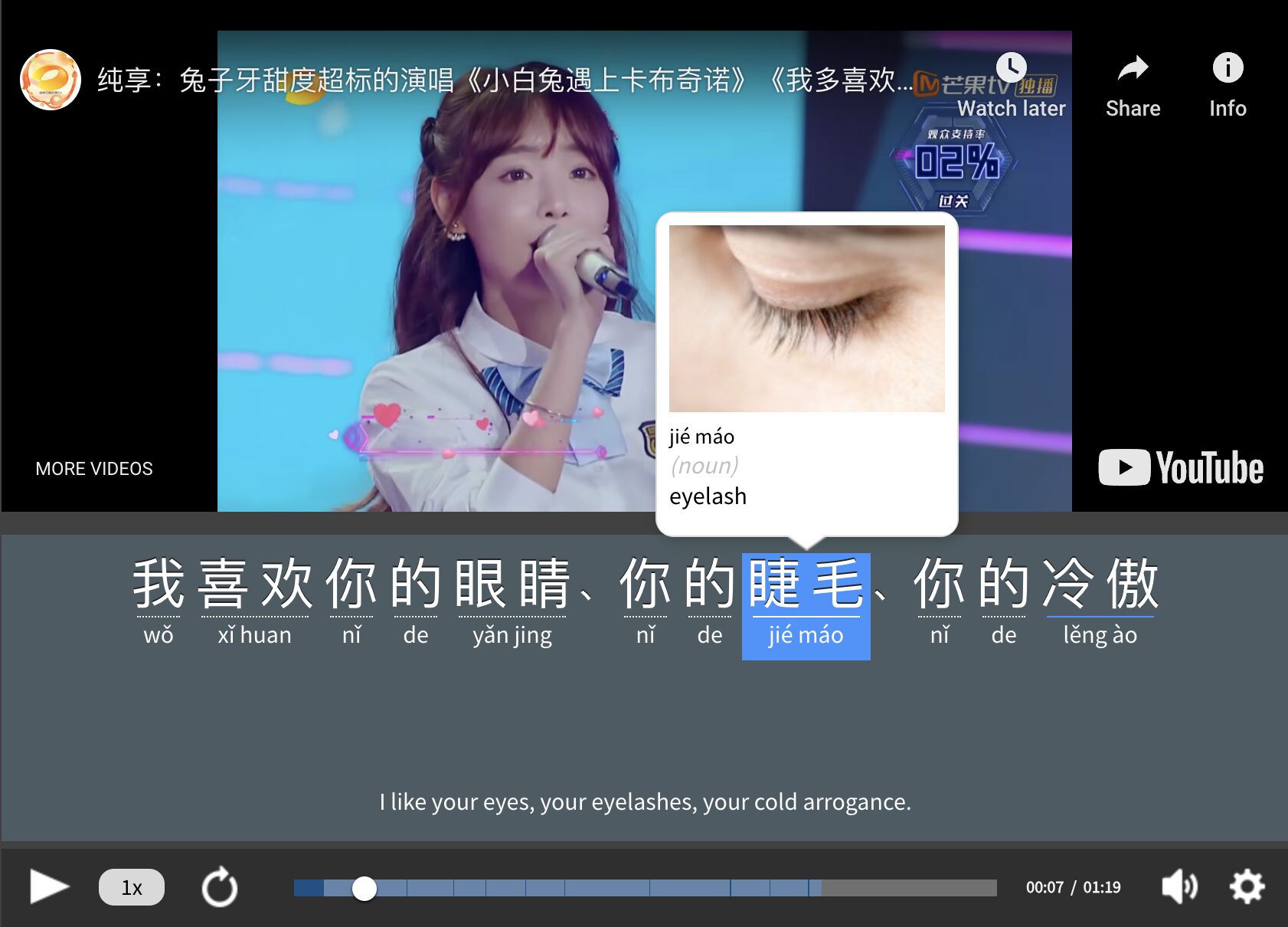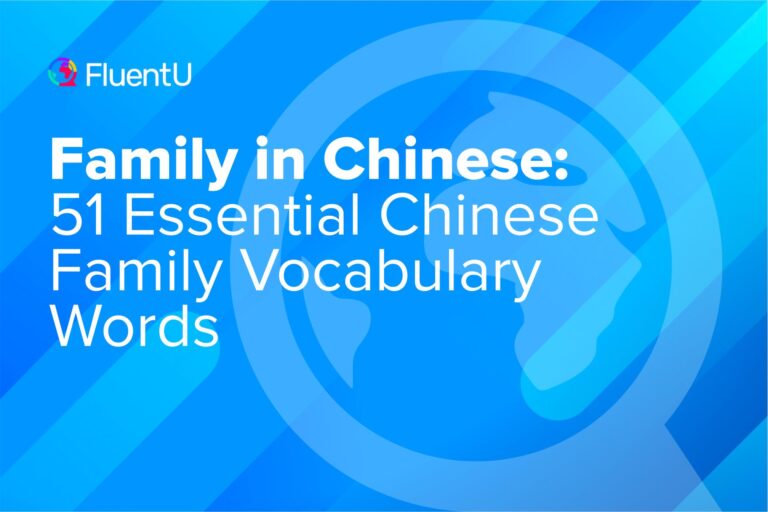How to Say “To Know” in Chinese: 知道 vs 认识

There are two ways to say “to know” in Chinese: 知道 (zhī dào) and 认识 (rèn shi). But there are very important differences between the two.
There are certain circumstances where usage might be interchangeable, but more often than not you’ll want to be careful which you use. Here’s what both of them mean and when to use each one.
Download: This blog post is available as a convenient and portable PDF that you can take anywhere. Click here to get a copy. (Download)
1. 知道 (zhī dào)
Definition: To know, to be aware of
If you are looking for a default way to say “I know…”, 知道 is usually your best bet. Its range of use and flexibility is broader than 认识. You can use it for facts, objects, or people you aren’t personally acquainted with, but are aware of or have a general understanding about.
Examples:
你怎么知道?
(nǐ zěn me zhī dào?)
How do you know?
他知道怎么样说三种语言。
(tā zhī dào zěn me yàng shuō sān zhǒng yǔ yán.)
He knows how to speak three languages.
你知道比赛的结果?
(nǐ zhī dào bǐ sài de jié guǒ?)
Do you know the result of the match?
我不知道老师的意思。
(wǒ bù zhī dào lǎo shī de yì si)
I don’t know what the teacher means.
他的目标是让人知道。
(tā de mù biāo shì ràng rén zhī dào.)
His goal is to let people know.
2. 认识 (rèn shi)
Definition: To know, understand, be familiar with, to meet (a person)
Using 认识 indicates a degree of familiarity with an object, person or idea. It implies a level of understanding that goes beyond 知道 and connotes a level of personal familiarity.
Examples:
很高兴认识你!
(hěn gāo xìng rèn shi nǐ!)
So happy to meet you!
我们是在大学认识的。
(wǒ men shì zài dàxué rèn shi de.)
We met in college.
我认识这个汉字。
(wǒ rèn shi zhè ge hàn zì.)
I know this Chinese character.
他认识到这是一件坏事。
(tā rèn shi dào zhè shì yī jiàn huài shì.)
He realized this was a bad thing.
你得认识到你的错误。
(nǐ děi rèn shi dào nǐ de cuò wù.)
You must recognize your mistakes.
When to Use 认识 vs 知道
Here are some simple tips to remember. Besides these, another tip is to use FluentU to see how to use these words in context.
- 知道 is probably your go-to when expressing “to know.” For example, if someone tells you not to be late for your appointment, you can say 我知道 (wǒ zhī dào) — “I know.”
- 知道 is for knowing of/about and 认识 is for knowing personally/being familiar with. I’ve heard of Tom Cruise. I’ve seen many of his movies. I casually follow his religious and relationship exploits online. But I have never personally met him. Thus, I 知道 Tom Cruise, but don’t 认识 him.
- If you “realize or recognize something,” use 认识. If you went through the process of not knowing something to become privy to it, indicate your level of personal involvement by using 认识.
知道 vs. 认识 Practice Quiz
Each of the following sentences uses either 知道 or 认识. Fill in the blanks with the correct translation of “to know.”
1. 你不___吗?(nǐ bù ___ ma?) — Don’t you know?
2. 我不___那个人。(wǒ bù ___ nà ge rén.) — I don’t know that person.
3. 我想___答案。(wǒ xiǎng ___ dá àn.) — I want to know the answer.
4. 你们___吗?(nǐ men ___ ma?) — Do you know each other?
5. 她___很多朋友。(tā ___ hěn duō péng you.) — She knows a lot of friends.
6. 他不___怎么去那里。(tā bù ___ zěn me qù nà li.) — He doesn’t know how to go there.
7. 你们是在哪里___的?(nǐ men shì zài nǎ li ___ de?) — Where did you meet?
8. 请告诉我你都___什么。(qǐng gào su wǒ nǐ dōu ___ shén me.) — Please tell me everything you know.
9. 我不___怎么办。(wǒ bù ___ zěn me bàn.) — I don’t know what to do.
10. 你___这个地方吗?(nǐ ___ zhè ge dì fang ma?) — Do you know this place?
Answer key:
1. 知道
2. 认识
3. 知道
4. 认识
5. 认识
6. 知道
7. 认识
8. 知道
9. 知道
10. 认识
Congratulations! You now know the two different ways to say “to know” in Chinese and what makes them different from each other. With practice, these will become second nature.
Download: This blog post is available as a convenient and portable PDF that you can take anywhere. Click here to get a copy. (Download)
And one more thing...
If you like learning Chinese at your own pace and from the comfort of your device, I have to tell you about FluentU.
FluentU makes it easier (and more fun) to learn Chinese by making real content like movies and series accessible to learners. You can check out FluentU's curated video library, or bring our learning tools directly to Netflix or YouTube with the FluentU Chrome extension.
One of the features I find most helpful is the interactive captions—you can tap on any word to see its meaning, an image, pronunciation, and other examples from different contexts. It’s a great way to pick up vocab without having to pause and look things up separately.
FluentU also helps reinforce what you’ve learned with personalized quizzes. You can swipe through extra examples and complete engaging exercises that adapt to your progress. You'll get extra practice with the words you find more challenging and even be reminded you when it’s time to review!
You can use FluentU on your computer, tablet, or phone with our app for Apple or Android devices. Click here to take advantage of our current sale! (Expires at the end of this month.)










